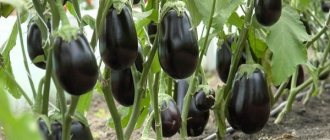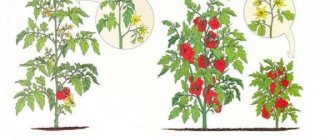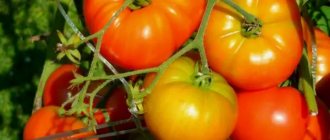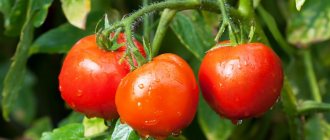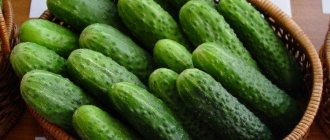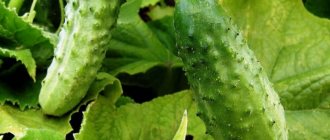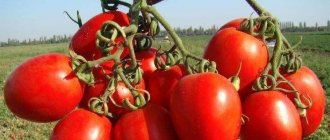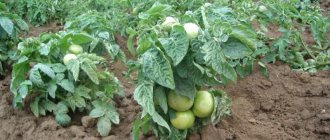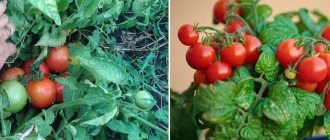Description of the carrot hybrid Boltex
The mid-late hybrid Boltex F1 is produced by the French agricultural holding Tezier Clause. It produces a high yield of strong and juicy medium-sized root crops. Has a competitive advantage among late carrot varieties.
Origin and development
Boltex F1 is a daughter patented hybrid variety of the first generation of the Chantane variety. It belongs to heterotic varieties - superior in quality to its “parents”, obtained as a result of artificial pollination of flowers of different subspecies.
Chemical composition
The peculiarity of the Boltex hybrid is its low calorie content and high content of carotene, a healthy sugar. 100 g of homogeneous pulp contains only 43 kcal. Moreover, 90% of the root vegetable consists of water.
100 g contains 17.2% proteins, 2.3% fats and 80% carbohydrates, as well as:
- 2400 mg fiber (indigestible fiber) - stimulates gastrointestinal motility;
- 8.26 mg of beta-carotene - improves the condition of the visual organs;
- 0.15 mg of retinol - beneficial for the skin and mucous membranes;
- 0.03 mg of biotin - restores skin cells, participates in metabolic processes;
- 0.15 mg of pyridoxine - improves the process of hematopoiesis and blood composition, supports the functioning of the nervous system;
- 0.06 mg of thiamine - stimulates brain function, affects carbohydrate metabolism;
- 0.06 mg of riboflavin - improves hormone synthesis, normalizes the number of red blood cells in the blood;
- 0.01 mg phylloquinone - supports liver function;
- 5.7 mg of ascorbic acid - has a pronounced antioxidant effect, protects against viruses and infections;
- 0.7 mg of tocopherol - inhibits cell aging, improves blood flow.
Boltex carrots contain phytonutrients. Bioactive substances increase immune function and reduce the risk of cancer.
The variety has a rich mineral composition:
- potassium - 325 mg;
- magnesium - 13 mg;
- phosphorus - 35 mg;
- manganese - 0.15 mg;
- iron - 0.4 mg;
- copper - 0.05 mg.
Ripening time and yield
Mid-season Boltex carrots ripen in 110-125 days after the first shoots.
Subject to agrotechnical conditions, watering regime and timely fertilizing, the hybrid produces a high yield. Up to 8 kg of root crops are harvested from 1 m². Moreover, the weight of 1 fruit reaches 150-160 g.
On large farms, the average yield reaches 60-70 tons per hectare.
Disease resistance
Average resistance to flowering, bolting and cracking of root crops is observed.
High immunity to common crop diseases:
- downy mildew;
- cercospora;
- root rot;
- Alternaria blight.
Description of appearance
Boltex F1 belongs to biennial herbaceous plants of the Apiaceae family, a subspecies of wild carrots. A hybrid variety of the Shantane variety.
The rosette tops are spreading, powerful, and erect. The leaves are medium-sized, dissected, bright green in color.
The root crop is elongated, cone-shaped, with a blunt rounded tip. It grows up to 15 cm in length. The circumference at the base is up to 4-5 cm. The fruit is dark orange in color with juicy, uniform, dense pulp. The core is medium in size, not pronounced. The peel is thin, even and smooth. Due to the high content of sugar, beta-carotene, and dry substances, the taste is delicate, sweetish, without bitterness.
Presentation and taste are preserved for 10-12 months.
What regions is it suitable for?
The crop is cold-resistant and, with sufficient watering, tolerates summer heat well. The hybrid is adapted to heavy types of substrate.
Root crops have time to fully ripen in climate zones with short summers and frosty winters.
Hybrid Boltex is sown in Siberia and the Urals. It is also zoned in the northern, southern, and temperate latitudes of the country.
Boltex carrots: characteristics and description of the variety, features of cultivation and care, photos
Carrots are considered one of the most popular and sought-after fruit crops, so every year thousands of gardeners allocate quite a lot of space for the root crop.
Today, many different varieties and hybrids of the crop are known, but not all of them are distinguished by productivity, unpretentiousness and excellent quality of fruits.
This article will examine in detail how Boltex carrots differ from related varieties, as well as its advantages and main disadvantages.
Characteristics and description of the variety
Boltex is a typical representative of the Umbrella family. The hybrid has similar outline, shape and growth characteristics to other types of carrots, but is distinguished by a unique combination of morphology, fruiting time and yield. In addition, the variety has some unique properties that affect not only the productivity of the root crop, but also the quality of the crop.
Origin
In recent years, the Boltex variety has become a truly popular variety of carrots, the cultivation of which is a real advantage for the vegetable grower. This is explained by the fairly high quality of the seed material.
The author of the variety is the world-famous French agricultural holding Clause, which has been breeding, producing and selling high-quality seed material for vegetable crops for more than 200 years.
The variety is one of the company's most modern developments. It was obtained as a result of direct crossing of hybrids previously developed by the company, which made it possible to improve the initial qualities of the mother plants in the new variety. This allowed breeders to create a highly productive variety of carrots, the Chantanay type, popular throughout the world.
Productivity
Productivity is one of the main distinguishing features of Boltex. Carrots can easily produce about 8 kg of fruit/m² of plot, but under optimal conditions this figure can increase. Under artificial conditions, with strict adherence to fertilizing, watering and an optimal microclimate, the hybrid is capable of producing up to 10 kg/m².
Ripening time
This variety of carrot is classified as a mid-season vegetable plant. This means that the crop (depending on the microclimate and care regime) ripens approximately 100–125 days after the start of active growing season.
Pros and cons of the variety
- The main advantages of carrots:
- increased productivity;
- the plant bears fruit well on any type of soil, including dense chernozems;
- the variety is resistant to bolting and flowering;
- the harvest has high taste characteristics;
- fruits can be stored for a long time and can also withstand long-term transportation;
- the plant is resistant to characteristic diseases, including Alternaria and root rot;
- Carrots are great for both fresh consumption and canning.
The plant also has some disadvantages. First of all, Boltex is a first-order hybrid obtained by direct crossing of mother plants.
That is why it is not able to reproduce on its own, since when receiving second-order seeds, degeneration of the variety is observed.
Also, the disadvantages of the hybrid include the need for painstaking care and the high cost of seed material.
We recommend that you familiarize yourself with the average varieties of carrots:
The main distinctive features of Boltex relative to related varieties:
- strong and powerful vertical tops;
- the fruits have a uniform orange tint both inside and outside;
- the hybrid is the best variety of carrots of the Chantanay type;
- ripe fruits are easily released from the soil;
- increased carotene content in the pulp;
- Boltex can be successfully used for winter sowing.
Features of sowing the variety
The hybrid is a heat-loving representative of carrot varieties, therefore, in most cases, moderate watering, as well as temperatures within +20...+25°C, make it possible to achieve good productivity of the variety. However, in order to get the maximum yield, it is imperative to choose the right place for the beds, as well as to properly prepare the site.
Selecting a location and preparing the bed
Sow carrots in open and well-lit areas, protected from drafts and excessive humidity. A plain or a small hill is best suited for this.
Sowing in lowlands will lead to waterlogging of the plants, which in the spring is fraught with putrefactive lesions, and at the end of the growing season - cracking of the fruits.
As mentioned above, Boltex is unpretentious to the composition of the soil mixture, so it grows and develops well on any fertilized soil.
But the highest yields, characterized by excellent quality, are found on sandy or loamy substrates with a high content of dust. Also, optimal soil conditions for the crop occur when the soil mixture has a neutral pH (6.0–6.5), as well as a groundwater level within 0.8–2.5 m.
Important! If the site is located on clay soils, the substrate must be lightened. To do this, add 1–3 buckets of clean river sand per 1 m².
The preparation of the site for sowing is carried out in the fall, after the leaves have fallen. The procedure begins by cleaning the garden from remnants of vegetation, weeds and all kinds of pollutants. Then the area must be dug up twice with an interval of 10–14 days. The first time the soil is loosened to a depth of at least 30 cm, the second time - to 15–20 cm.
After the second loosening, the soil must be fertilized; for this, the territory of the future site is sprinkled with crushed peat, a layer of 2 cm, and then everything is well watered. In this form, the plot is left for the winter, and then in the spring, immediately before planting, it is thoroughly loosened again.
For a carrot bed, it is recommended to choose an area where there are not too many weeds
Crop rotation rules
To achieve high productivity of carrots, the basics of crop rotation on the site should also be observed.
A 7-year crop rotation system is considered the most effective, but in small summer cottages such a system is often difficult to implement, so in this case the so-called 4-year crop rotation is used.
To do this, the garden is divided into 4 separate sections, on the territory of which 4 main crops are grown alternately. Thus, carrots will grow in the same place no earlier than once every 4 years.
Important! The worst predecessors of carrots are parsley, eggplant, parsnips, fennel, zucchini and celery. Root crops are grown in their place no earlier than after 4-5 years.
It is most profitable to carry out crop rotation in a separate area according to the following principle:
- in the first year carrots are sown;
- in the second year after the root crop, cruciferous vegetables are grown;
- after cruciferous vegetables, tomatoes, cucumbers, melons or potatoes are cultivated;
- at the end of the crop rotation, legumes (peas, beans, chickpeas, clover, etc.) are sown, and then the cycle is repeated.
Preparing and sowing seeds
Carrots are sown in the second half of spring; the best time for this is the beginning - mid-May. This is the optimal time period to produce rich and flavorful harvests. However, the crop is also sown before winter, after the first frost, at the end of November - the first half of December.
In this case, you can get fresh root vegetables in the spring. Preference is given to spring planting; such a harvest is distinguished by keeping quality and excellent quality.
Before winter, the root crop is sown exclusively for fresh consumption before the main harvest is harvested, since such carrots have a reduced shelf life.
Immediately before sowing, it is imperative to prepare the seed material. To speed up the rooting of seeds to the maximum, you should use a solution of “sodium humate” instead of water. To do this, dissolve 1 g of the product in 2 liters of water, and the duration of soaking in the solution is extended to 6–8 hours.
Carrot seeds are soaked in warm water at room temperature for several hours. The prepared seeds are sown in rows. To do this, oblong furrows 2–3 cm deep are created on the soil, at a distance of 45 cm between each. The planting pattern can be twice as wide.
Then the rows are placed as shown in the figure. After this, the furrows are carefully covered with soil, and then the area is thoroughly watered. When planting before winter, seeds are not soaked or watered, as this will cause the seeds to freeze. Carrots are sown so that there are about 0.5 g of seeds per 1 m².
It is not recommended to exceed the norm, as this may cause excessive thickening of the crops.
Crop care
After the carrots have been successfully sown, a regulated care system should be created on the site. It provides for periodic watering, fertilizing and a set of soil cultivation procedures. Only with this approach can the crop produce valuable harvests of the highest quality.
Watering and fertilizing
Water the carrots regularly; until the first half of July, the procedure is carried out 1–2 times a week, after which the frequency of moisture is halved. Irrigation is carried out so that the water completely saturates the top 30 cm layer of soil. To do this, it is permissible to use both irrigation and moistening at the root.
During irrigation, use only clean and settled water, preheated to ambient temperature. If all preparatory measures are followed, carrots only need fertilizer 2 times per season.
The first time the beds are fed 3 weeks after sowing, the next time the procedure is carried out approximately 2 months after sowing. To do this, use a complex mineral mixture prepared from 10 liters of water, 2 cups of wood ash, 1 tbsp. l. nitrophoska, 20 g of potassium nitrate, 20 g of urea and 15 g of superphosphate.
The resulting solution is used for irrigation at a rate of 5 l/m². It is necessary to feed carrots. This is necessary for full growth, nutrition, increased vitality and immunity.
Loosening and mulching the soil from weeds
Loosening the soil is one of the most important procedures for caring for crops. It allows you to saturate the soil with oxygen, protect the beds from weeds, and also reduce the density of the substrate.
As a final result, this has a positive effect not only on the growth activity of carrots, but also on the size and weight of root crops. Loosening is carried out periodically, at least once every 2 weeks, to a depth of about 10 cm.
In order not to cause excessive drying of the soil, it is recommended to treat it only 1-2 days after precipitation or watering. After loosening the soil, mulch it if possible.
This allows you to avoid drying out of the substrate, reduce the frequency of watering, and also additionally protect the plantings from weeds. Sawdust, bark, pine needles, husks, coke bark, etc. are used as mulch. The thickness of the mulch layer should be within 5 cm.
Learn how to properly thin carrots in open ground.
Pest and disease control
The Boltex variety is quite resistant to various diseases and pests, so observing all the subtleties of growing the crop will best help prevent these pathologies. At the same time, thickening of crops, as well as excessive humidity in the area, should be avoided.
But sometimes a hybrid can still be affected by fungi and parasites. The most common pest is considered to be the so-called carrot fly. When it appears, crops are treated with complex insecticides, among which the most effective are the preparations Intavir and Actellik.
The treatment is carried out twice, with an interval of 14 days. In the event of the appearance of putrefactive lesions and various spots on the green mass and root crops, as well as other manifestations of infections, the crops are sprayed with a 1% solution of Bordeaux mixture.
This procedure is carried out at least 2 times, with an interval of 14 days.
Read more about the description and methods of controlling carrot pests.
Advantages and disadvantages
Advantages of culture:
- equally high productivity in open ground and greenhouses;
- copes well with daily temperature fluctuations;
- seedlings germinate even during spring frosts down to –4°C;
- In cool summer conditions, root crops fully develop.
Among the disadvantages, farmers note:
- seed material is not cheap;
- hybrids do not produce high-quality seed “offspring”;
- in the second generation, morphological characteristics are lost, the positive properties are scattered into the forms of the predecessor parents.
Difference from other varieties and hybrids
Boltex F1, according to the Seed Supermarket magazine (No. 5, spring 2016), is recognized as the best variety for storage.
The pulp is homogeneous, the core also has an orange tint.
The improved subspecies is intended for winter planting; the root crops have time to ripen before the onset of cold weather.
Characteristics of the variety
Boltex carrots differ among mid-late varieties in a number of advantages:
- smoothness and harmony of the shape of root crops;
- high stable yield;
- moderate resistance to discoloration and cracking;
- excellent aroma and taste;
- the ability to retain its taste and commercial qualities for a long time.
Root crops ripen 120 days after seedlings appear. When ripe, they reach a length of 15 cm, look attractive, and have a highly saturated orange color. Carrots are quite large; one vegetable can weigh more than 350 g.
Easily removed from the beds even during the rainy season. The variety is consumed fresh for preparing dishes, juices, purees, and casseroles. Excellent preservation in processed form. Boltex root vegetables are frozen in crushed form and canned. And, most importantly, it is stored for a long time and with high quality. A reliable source of vitamins in winter. Before purchasing seeds, you need to pay attention to the photos, reviews and description of the variety on the label. Seeds can be bought in specialized stores in large cities - Moscow, St. Petersburg, as well as in other regions.
Features of planting and growing
When planting the Boltex F1 hybrid, it is important to take into account agronomic conditions, features of soil preparation, seed material and method of cultivation.
Preparing for landing
In April - early May the site is prepared:
- the beds are dug up;
- large clods are broken, the substrate is leveled with a rake;
- weeds are removed by the roots;
- During autumn digging, the beds are fertilized with compost, manure, and minerals.
It is important to treat the seeds with special growth preparations before planting. Stress adaptogens provide rapid adaptation and 100% germination. The seed material is soaked for 2-3 hours in the growth stimulator “Kornevin”, “Epin”, “Energen Aqua”.
Soil requirements
The variety is suitable for all types of soil, including heavy black soil, sandy loam and loamy soils. An important condition is a fertile layer of at least 20-25 cm.
Important! To reduce soil acidity, the Boltex liming method for carrots is not recommended. Use soft soil deoxidizers - dolomite flour or wood ash.
To improve moisture permeability and looseness, coarse river sand is added to heavy rocky soil or loams.
Predecessors
Boltex carrots grow well after garden crops:
- tomatoes;
- cabbage;
- Luke;
- garlic;
- hot and sweet pepper;
- early potato varieties;
- cucumbers
The culture grows and develops poorly after:
- greens (cilantro, parsley, dill);
- celery;
- beets;
- cumin.
Dates, scheme and rules of planting
Pre-treated seeds are sown in open ground or a greenhouse in the first ten days of March (early spring sowing). Summer planting (to store the crop for the winter) is carried out at the very end of May or beginning of June.
Important! Late spring (pre-winter) crops produce a full harvest; root crops are stored all winter, do not dry out, do not wrinkle, and retain their nutritional composition and taste.
Planting is carried out according to the following scheme:
- consumption rates are calculated in the ratio of 0.2 g per 1 m², respectively, 2 g (one packet of seeds) is enough for an area of 10 m²;
- row spacing - at least 15-20 cm;
- distance between seedlings - 3-4 cm;
- seeds are buried 1-2 cm;
- To ensure uniform distribution of seeds, sowing is carried out manually;
- the optimal temperature for sowing is 10-12°C;
- in cold regions, seeds germinate at a temperature of +5...+6°C;
- full-fledged root crops are formed and ripen at a temperature of +20...+23°C.
Features of cultivation
In dry, infertile soil, seeds do not germinate well, seedlings are weak, and often get sick and die.
It is important to comply with the depth standards. When planted deeply, the sprouts do not receive adequate nutrition. When planted superficially (without sufficient depth), germination is reduced due to the drying out of the top layer of the substrate. The sprouts grow variegated, with a delay of 7-10 days.
The culture prefers illuminated planting sites and tolerates summer heat well. Pre-winter sowing is carried out at the end of October or beginning of November, mainly in closed ground, with temperature regulation and lighting.
To maintain moisture exchange and soil moisture in the summer heat, the beds are mulched with sawdust or hay. In cold regions, immediately after sowing, it is recommended to cover the area with film overnight. During the day, the shelter is periodically removed for 1-2 hours for ventilation.
Watering mode
Abundant daily watering is recommended at the beginning of the growing season and during the formation of root crops. The optimal mode is regular, as the top layer dries. In moderate climates, watering once a week is sufficient. At the end of the formation of root crops, watering is reduced by 2 times, taking into account precipitation and temperature. Excess moisture causes cracking and warping. Substrate humidity 2 weeks before harvest should not exceed 60%.
Thinning and weed control
Weeding is carried out regularly, as clogging occurs . They loosen a week after seed germination (to a depth of no more than 7 cm), then at intervals of 14-15 days. When the seedlings have 1-2 true leaves, the crops are thinned, leaving a distance of up to 4 cm.
In order not to harm the roots, the soil is moistened before weeding and thinning the seedlings, and after weeding the rows are mulched.
Top dressing
Organic fertilizers are applied in advance when digging the site in the fall. Compost, a diluted solution of manure or litter, is suitable for these purposes.
Mineral complexes (potassium, phosphorus) are added throughout the entire period of growth and formation of root crops. The recommended dose of fertilizer is up to 15 g per 1 m².
For systemic feeding, fertilizers “Kemira” and “Nitrofoska” are used. In the northern regions - calcium sulfate at the beginning of the growing season.
Disease and pest control
Overwatering is unacceptable - root crops become infected with root rot, and the crop rots.
It is advisable to treat the seedlings and substrate with pesticides (“Fitoverm” is used to spray the tops). The last treatment is 3-4 days before harvest.
Important! Mulching beds protects against garden pests.
Organic matter (compost and manure), a layer of mulch (peat, sawdust) must be disinfected with urea.
Treatment with a solution of Bordeaux mixture or other fungicides and insecticides (antifungal drugs Intavir, Actellik) helps against powdery mildew, carrot fly, and spotting.
How to sow winter crops?
Not all varieties of carrots can be planted in winter. Some crops are prone to bolting. If the seed is sown incorrectly, metabolic processes are disrupted. The root gives the arrow.
The Boltex variety, as described by the manufacturers, tolerates low temperatures well and is not prone to flowering, but it is necessary to follow some rules for sowing winter crops:
- choose a period when the air temperature drops to -2 C and the soil freezes slightly. It's good if it snows. They cover the seeds;
- the soil is prepared 3 months before sowing: nutrients are added; improve and soften the soil. Before sowing, add potassium salt 20 g/m2, superphosphate 40 g/m2;
- in the bed, grooves are prepared with a depth of 2 cm, leaving a row spacing of 20-25 cm;
- pour a little ash into the prepared furrows and place the seeds. They are sprinkled with a mixture of peat, sand, sawdust;
- The bed is covered with snow and covered with spruce branches. If it is not available, then use agrotextiles, reed mats, and a layer of sawdust. They wait until spring.
View this post on Instagram
Publication from the Ministry of Agriculture JSC (@minselkhozao)2 Oct 2021 at 4:33 PDT
In spring, all covering material is removed. A film tunnel is made for the seedlings to protect them from low temperatures. The tunnel does not need to be used if the air temperature rises to 10 C, there is no risk of night frosts.
Seeds are not treated with growth stimulants. They are exposed to melt water, which starts the metabolic process. Reviews from plant growers say that winter crops always sprout vigorously. Seeds and shoots are protected by nature itself.
Pests have not yet woken up; low temperatures prevent the development of bacteria and viruses. To prevent the seeds from rotting and rot from appearing on the soil, use ash or the drug “Topaz”; carry out spraying; solution 2 ml/l. Winter crops are sown in Moscow and in the northern regions.
Harvest and storage
A timely harvest is the key to good keeping quality and long-term storage. It is not recommended to overcook root vegetables.
How and when to collect
The crop is harvested 3-3.5 months from the date of sowing.
Harvesting rules:
- stop feeding at least 3-4 days before;
- complete watering in a week;
- dig only in dry weather with a shovel;
- Use a sharp knife to cut off the tops.
Storage features and shelf life
The harvest is stored in special rooms (cellar, basement, barn). The optimal temperature is -2°C. Permissible air humidity is no more than 95%.
Important! When storing, avoid exposure to sunlight and moisture.
Storage method:
- in stacks;
- in bulk;
- in the pyramids;
- boxes;
- plastic bags;
- trenches and holes.
Immediately after harvesting, root crops are sorted and those damaged by diseases are removed. Dry for an hour. Cool in a darkened room for 7 days.
Damaged root vegetables are cleaned, grated, processed or sent to the freezer. This crop cannot be stored.
The best early ripening varieties of carrots
Amsterdam
For technical ripening, 80 to 85 days are enough. With proper care and suitable weather, you can get up to six kg. It is medium-sized, rich orange in color, cylindrical in shape with a blunt end and a narrow core of the same color. It can reach 16 centimeters in length. The maximum weight that grew was 70 grams. Carrots of this variety are juicy and sweet. Moisture-loving. Even with excessive watering it does not burst. Demanding on the soil, which must be light, fertile, with a deep tillage layer.
Lenochka
In terms of characteristics and growing habits, this variety of carrots is similar to Amsterdam carrots. With the exception of the length: usually not exceeding 14 centimeters and the “jumping” weight of the vegetable, when it is 130 grams, and when it is only 80. And also the medium-term storage duration. The harvest is not very good, maximum 4.5 kg.
Darling
A variety of carrots, weighing 150 grams, characterized by a high percentage of carotene content. Poured, honey-like pulp. Excellent yield, with tolerance to high humidity. Good for long-term storage. Fruits up to 14 cm long practically do not stick out from the soil. In cooking it is recommended to use for processing.
Orange nutmeg
A proven, consistently productive carrot variety - 5.3-5.9 kg. Lyozhky. The root vegetable has almost no core. It grows up to sixteen centimeters, weight - from 120 to 145 grams. Excellent taste. Vegetable seeds are sown in April-May to a depth of one centimeter. The desired distance between rows is 20 cm. When thinning, leave about five cm between shoots.
Fairy
These carrots are suitable for a long period of storage. Ripeness occurs after 100 - 110 days. The grown root vegetables have the shape of a cylinder with a pointed end. The color is red. Weight from 85 to 175 g. On average, no more than 4 kg comes out of a “square”. The taste is on par.
Minicore F1
A hybrid carrot variety with a high yield of 7-8 kg. Ripens within 75-90 days. Cylindrical, orange. The length of vegetables does not exceed 15 cm, in diameter - 1.5. They weigh on average about 90 grams. Guarantees early carrots for personal use, but is also good for sale. Recommended for children. Shelf life is limited.
Advice from experienced gardeners
If the area has not been fertilized since the fall, in the spring, after digging the beds, dolomite flour is scattered directly over the surface of the soil. Maintain proportions - 2 tbsp. per 1 m². Then the fertilizer is carefully incorporated with a rake to a length of teeth of 6-7 cm. It is at this depth that beneficial soil microorganisms and bacteria live.
It is important to water the furrows with warm water before burying the seeds. This procedure ensures rapid germination and activates growth processes.
Hybrid Boltex does not tolerate shading, especially at the beginning of the growing season. The seedlings stretch out, the root crops form crooked and small.
Agrotechnical trick. When grown on ridges and ridges, the amount of harvest increases by 1.5-2 times.
Hybrid varieties of the best early carrots
Lydia F1
Mid-early hybrid. Ripens at 90-100 days. Productivity from 5.5 to 6 kg. Conical - cylindrical shape. Very long - more than 27 cm, on the contrary, narrow in diameter - two and a half centimeters. Weight is around 100 g. Juicy orange color. The taste is “magical”. For planting, high beds with fertile, light soil are recommended. Carrots take root well in both southern and temperate climates. Use: fresh, canned, frozen. The only negative is the short shelf life.
Nandrin F1
Readiness occurs 85-110 days after germination, with a yield of 5.3-6.2 kg. Cylindrical, orange, with a red tint, straight roots with an average length of 18 cm. Little susceptible to cracking. Shelf life is long.
News F1
Medium early variety. Universal. Medium length, cone-shaped, smooth, orange in color. Each vegetable weighs from 120 to 220 grams. “Run-up” in yield from 2.6 to 5.2 kg.
Reviews of the carrot hybrid Boltex
According to statistics from agricultural stores and supermarkets, Boltex carrots received 94% positive feedback. On the forums, summer residents give a positive assessment to the hybrid.
Vladimir D., Moscow region. : “I recommend Boltex to everyone. Great carrots are growing. The seeds, however, are expensive, but they are of high quality, and everything pays off. Sweet and juicy until spring, I store it downstairs in the refrigerator in plastic bags.”
Oksana M., Rostov: “Boltex - the price meets expectations, the carrots are just lovely! Children eat grated without sugar, it is so sweet. The manufacturer did not deceive, the original seeds give a good harvest.”
